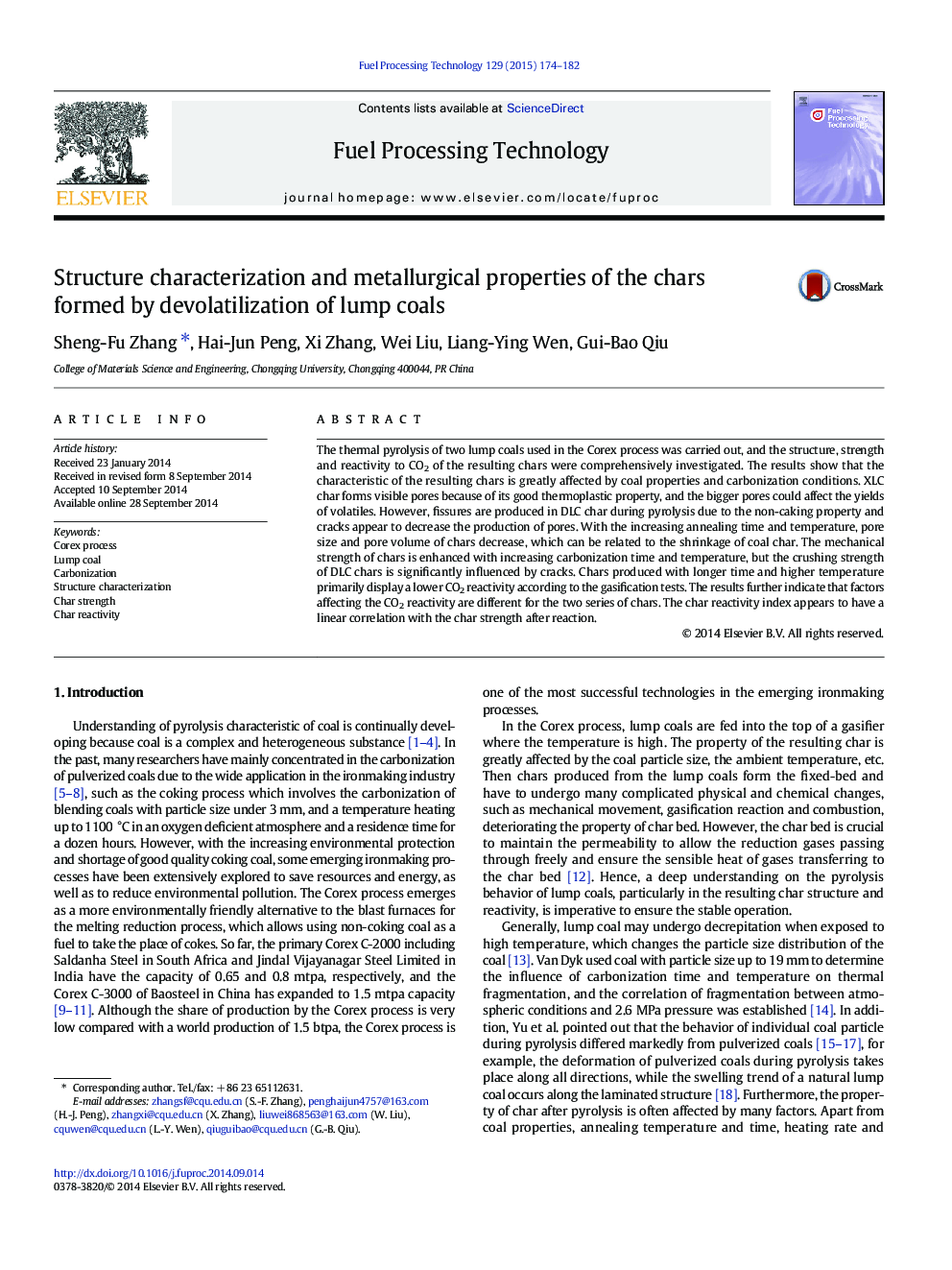| Article ID | Journal | Published Year | Pages | File Type |
|---|---|---|---|---|
| 209629 | Fuel Processing Technology | 2015 | 9 Pages |
•Char property is greatly affected by coal property and carbonization condition.•Bigger pores formed in lump coal char could affect the yields of volatiles.•The shrinkage of coal char appears to decrease the pore size and volume.•Factors affecting the reactivity are different for the two series of chars.•A linear correlation between CRI and CSR exists.
The thermal pyrolysis of two lump coals used in the Corex process was carried out, and the structure, strength and reactivity to CO2 of the resulting chars were comprehensively investigated. The results show that the characteristic of the resulting chars is greatly affected by coal properties and carbonization conditions. XLC char forms visible pores because of its good thermoplastic property, and the bigger pores could affect the yields of volatiles. However, fissures are produced in DLC char during pyrolysis due to the non-caking property and cracks appear to decrease the production of pores. With the increasing annealing time and temperature, pore size and pore volume of chars decrease, which can be related to the shrinkage of coal char. The mechanical strength of chars is enhanced with increasing carbonization time and temperature, but the crushing strength of DLC chars is significantly influenced by cracks. Chars produced with longer time and higher temperature primarily display a lower CO2 reactivity according to the gasification tests. The results further indicate that factors affecting the CO2 reactivity are different for the two series of chars. The char reactivity index appears to have a linear correlation with the char strength after reaction.
